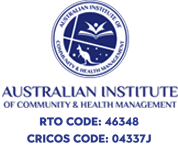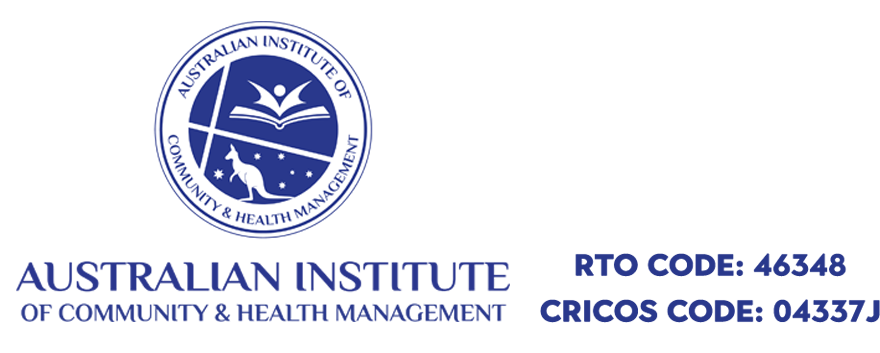School of Global Health


School of Global Health
The courses offered in this section are non-accredited (NACs). NACs are training that does not count towards a nationally recognised qualification, meaning a governing body does not officially endorse them and does not provide a formal credential. However, AICHM will provide course attendance certification.
Non-accredited courses are a great way to enhance your knowledge and career prospects. A person keen to maintain professional development may find that undertaking such courses can supplement your formal education or training.
Such courses can offer valuable skills and knowledge specific to a job role, industry, or organisation. Non-accredited courses are helpful in skilling, reskilling, or upskilling, or they can provide specialised knowledge not covered in accredited courses.
Global Public Health courses
Global Health
This course will provide you with an overview of the most critical public health challenges from a Global perspective.
Health diplomacy
This course will enable the participants to describe health diplomacy, its scope, opportunities, challenges and the limits of Global Health Diplomacy. Enable to examine the diplomatic, trade and geopolitical context that informs global health decision-making. Describe the roles of the various participants in the field, such as multinational organisations, governments, and philanthropists.
Approaches to Health Inequity
The health equity course covers approaches that address disparities in health outcomes across different populations by examining social, economic, and political factors contributing to inequities. It strongly emphasises understanding the lived experiences of diverse populations and incorporating intersectional perspectives. These methods usually concentrate on improving health outcomes for underserved areas and advancing equitable access to healthcare, sometimes involving critically examining the laws, customs, and structural impediments that sustain health disparities.
Practising Critical Public Health
Critical public health challenges the status quo and underlying social structures that contribute to health inequality by analysing power dynamics and social determinants of health rather than focusing just on individual actions or medical interventions. It emphasises social justice and fairness in public health practices.
Environmental crisis and public health
This course gives an overview of the case and consequences of environmental crises. Environmental crises significantly impact public health. These impacts can include increased disease burden, emerging and reemerging illness, mental health issues and increased mortality. The environmental crisis manifests through extreme weather, including heat waves, storms, flash floods, and wildfires. Environmental crisis may lead to food insecurity due to disrupted food systems and malnutrition. Increased risk of waterborne diseases and indoor and outdoor air pollution exposure lead to stress and trauma from displacement, loss, and cultural changes. Environmental crises disproportionally impact vulnerable populations. Children, older people, people with underlying health conditions, People living in rural and remote areas, people living in low-lying, flood- or bushfire-prone areas, socioeconomically disadvantaged groups and ethnic minorities, migrants, or displaced persons. This course will also give an overview of the global response to the environmental crisis.
Structural determinants of health
This course will address how Structural determinants of health impact public health. SDH are the social, economic, and political conditions that affect people’s health and well-being. Where people are born, grow, live, work, and age contributes to their health and wellness. These conditions are shaped by the distribution of resources, power, and money. SDH are the most significant contributors to individual health, more than genetics and personal behaviour.
Commercial determinants of health
This course will analyse the commercial determinants of health (CDoH). CDoH are how companies and agencies’ commercial activities impact health through marketing, production, and political activities. CDoH can positively or negatively affect health equity and well-being.
One Health
This course will introduce ‘One Health’ and its significance to Public Health. It is an integrated approach that aims to sustainably balance and optimize the health of people, animals and ecosystems. It recognizes that the health of humans, domestic and wild animals, plants, and the wider environment are closely linked and interdependent. By linking humans, animals, and the environment, One Health can help address the full spectrum of disease control – from prevention to detection, preparedness, response and management – and contribute to global health security.
Health policy
Health policy is the sum of value proposition, programmes, direction, and resource allocation affecting public health. Health policy’s effect on individuals’ access to care, to social goals for the health care system and health outcomes for the population. This course focuses on the process of policymaking and policy implementation. Policy can be negative as well as positive. Different health and healthcare systems may affect health care for—and the health of—individuals, groups, and the whole population by what they omit and what they provide, thus impacting health inequity.
Maximising Opportunities for Publishing in Academic Journals (Public health journals).
In this course, as the editor-in-chief of a public health journal, I will share how people can increase their chances of publishing their articles. I’ve read over a thousand manuscripts and written several hundred decision letters yearly in my editorial function. Throughout the adjudication of submissions, I’ve noticed patterns of omission and problem areas consistently noted across the manuscript. I have learned what peer reviews read for and where critical emphasis often lies in peer review. What readers seem to value as publishable scholarship usually shares certain features. This course will be helpful for both an established academic author and a fresh postgraduate trying to get their first paper to be published.
AI, Assistive Technology and Health Equity.
This course overviews the relationship between AI, assistive technology, and health equity. AI and assistive technologies, both existing and emerging, have the potential to significantly enhance health outcomes and access for various populations. AI and assistive technologies must be developed and applied carefully to prevent exasperating already-existing health disparities and guarantee that everyone, regardless of background or socioeconomic status, has equitable access to their benefits. This includes addressing data bias and the digital divide and ensuring that AI-powered assistive technologies are inclusively designed.
Health Advocacy and Policy Dialogue
“Health advocacy and policy dialogue” is a collaborative endeavour to bring different perspectives to the table to educate and direct health-related policy choices.” health advocacy and policy dialogue” is a process of actively interacting with legislators and other stakeholders to impact and mould healthcare policies through the presentation of data, the promotion of particular health needs, and the facilitation of candid dialogue to agree on the best course of action for enhancing population-wide health outcomes. This course will cover the stages and processes of Health advocacy and policy dialogue and its key aspects.
Partnership and collaboration
Collaborations play a critical role in skill development. A core component of the VET system has always been industry collaboration and consultation, evident at every level, from industry participation in creating training packages to the Standards for Registered Training Organisations (RTOs) requiring RTOs to interact with industry.
We engage effectively with industry, employers, and community representatives. The challenge of fulfilling the long-standing demand that VET trainers be dual professionals—experts in their subject and the delivery of training and assessment—can be lessened by partnerships between RTOs and companies. Furthermore, VET cooperation initiatives provide a means for the VET industry to fulfil the needs and expectations of employers, as well as to target specific cohorts. Industry partnerships would become increasingly important to skilling. Collaboration and consultation with industry have always been fundamental. We are carefully vetting and cultivating partnerships and cooperation at the national and international levels.
AUSTRALIAN INSTITUTE OF COMMUNITY AND HEALTH MANAGEMENT (AICHM)
Blended
Level 8 310 King St,
Melbourne VIC 3000
Quality Assurance : As a registered training organisation (RTO), the Institute operates within the Vocational Education and Training Quality Framework (VETQF) and the Australian Qualifications Framework (AQF) delivering nationally recognised qualifications and Units of Competency.
RTO Code: 46348 | CRICOS Code: 04337J

